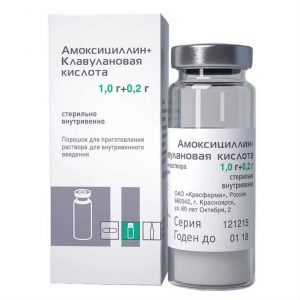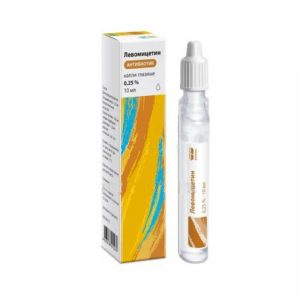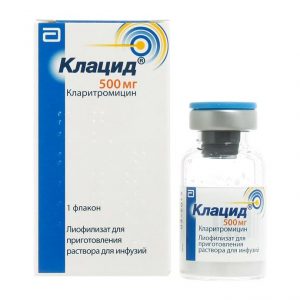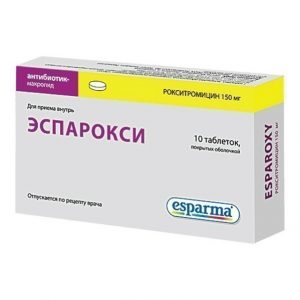Description
Release form
Powder for solution for injection.
Packaging
Bottle 1 g
Pharmacological action
The drug Ceftazidime is an antibacterial drug from the group of third generation cephalosporins, has a wide spectrum and is bactericidal, disrupts the synthesis of the cell wall of microorganisms, resistant to most beta-lactamases. The drug is active against gram-negative microorganisms: Haemophilus influenzae, Neisseria gonorrhoeae and other Neisseria spp. and most representatives of the Enterobacteriaceae family (Citrobacter spp., Enterobacter spp., Escherichia coli, Klebsiella pneumoniae and other Klebsiella spp., Morganella morganii and other Morganella spp., Proteus mirabilis (including indole-positive), Proteus vulgaris and other Proteus vulgaris and other Proteus vulgaris and other Proteus vulgaris ., Providencia rettgeri and other Providencia spp. And Serratia spp.), Acinetobacter spp., Haemophilus parainfluenzae (including ampicillin-resistant strains), Pasteurella multocida. Salmonella spp., Shigella spp. and Yersinia enterocolitica. Ceftazidime has the highest activity among generation III cephalosporins against Pseudomonas aeruginosa and nosocomial infection. The drug is active against gram-positive bacteria: Micrococcus spp., Streptococcus aureus, Streptococcus mitis, Streptococcus pneumoniae, Streptococcus pyogenes group A, Streptococcus viridans and other Streptococcus spp. (excluding Streptococcus faecalis) strains sensitive to methicillin: Staphylococcus aureus, Staphylococcus epidermidis. Ceftazidime is active against anaerobic bacteria: Bacteroides spp. (most strains of Bacteroides fragilis are resistant), Clostridium perfringens, Peptococcus spp., Peplostreptococcus spp. and Propionobacterium spp. The drug is not active against methicillin-resistant strains of Campilobacter spp., Chlamydia spp., Clostridium difficile, Enterococcus spp., Listeria monocytogenes and other Lisleria spp., Staphylococcus aureus and Staphylococcus epidermidis Streptococcus faecalis.
Pharmacokinetics After administration, the drug is rapidly distributed in the human body and reaches therapeutic concentrations in most tissues and fluids, including synovial, pericardial and peritoneal fluid, as well as in bile, sputum and urine. Distribution also occurs in bones, myocardium, gall bladder, skin and soft tissues in concentrations sufficient to treat infectious diseases, especially in inflammatory processes that enhance the diffusion of the drug. It penetrates poorly through the intact blood-brain barrier, but the therapeutic level achieved by the drug in the cerebrospinal fluid is sufficient to treat meningitis. Reversibly bound to plasma proteins (less than 15%), moreover, it has a bactericidal effect only in free form. The degree of protein binding is independent of concentration. The maximum concentration with intramuscular administration of 0.5 g or 1 g after an hour, respectively, is 17 μg / ml and 39 μg / ml, with intravenous administration, respectively 42 μg / ml and 69 μg / ml. The time to reach maximum concentration with intramuscular injection is 1 hour, with intravenous administration, by the end of the infusion. The concentration of the drug, equal to 4 μg / ml, persists for 6-8 hours. The therapeutic concentration in the blood plasma is maintained for 8-12 hours. The half-life with normal renal function is 1.8 hours with impaired 2.2 hours. The drug is not metabolized in the liver, impaired liver function does not affect the pharmacodynamics and pharmacokinetics of the drug. The dose in these patients remains normal. It is excreted unchanged by the kidneys up to 80-90% (70% of the administered dose is excreted in the first 4 hours) during the day by glomerular filtration and tubular secretion equally. In case of impaired renal function, a dose reduction is recommended. The volume of distribution is 0.21-0.28 l / kg. The drug accumulates in the soft tissues, kidneys, lungs, bones and joints, serous cavities.
Indications
Infectious and inflammatory diseases caused by drug-sensitive microorganisms:
severe infections, including nosocomial infections (septicemia, bacteremia, peritonitis, meningitis, infections in immunocompromised patients, infected burns,
urinary tract infections, urinary tract infections, urinary tract infections pyelitis, prostatitis, cystitis, urethritis (only bacterial /, kidney abscess)
lower respiratory tract infections (acute and chronic bronchitis, infected bronchiectasis, pneumonia caused by gram-negative bacteria, lung abscess, pleural empyema, lung infection in patients with cystic fibrosis)
infections of the skin and soft tissues (mastitis, wound infections, skin ulcers, phlegmon, erysipelas)
infections of bones and joints (septic arthritis, osteomyelitis, bacterial b )
infection of the gastrointestinal tract, abdominal cavity and biliary tract (enterocolitis, retroperitoneal abscesses, diverticulitis, inflammation of the pelvic organs, cholecystitis, cholangitis, empyema of the gallbladder)
infection of the pelvic organs and female genital organs
onoreya (especially at elevated sensitivity to antibiotics from the group of penicillins)
ear infections, nose and throat (otitis media, sinusitis, mastoiditis).
Contraindications
hypersensitivity to the drug Ceftazidime-AKOS
hypersensitivity to cephalosporins and penicillins.
Precautions: renal failure, a history of colitis, malabsorption syndrome (increased risk of decreased prothrombin activity, especially in patients with severe renal and / or liver failure), simultaneous administration with a loop diuretic and aminoglycoside, as well as a newborn.
Use during pregnancy and lactation
During pregnancy, the drug is used only if the expected benefits to the mother outweigh the potential risk to the fetus and the baby. When using the drug during lactation, breast-feeding should be discontinued.
Special instructions
Patients with a history of allergic reactions to penicillins may be hypersensitive to cephalosporin antibiotics.
Ethanol should not be consumed during treatment.
When using the drug and 2-3 weeks after discontinuation of treatment, the development of diarrhea caused by Clostridium difficile is possible. In mild cases, discontinuation of treatment and the use of ion-exchange resins (colestyramine, colestipol) are sufficient, in severe cases, compensation for loss of fluid, electrolytes and protein, the appointment of vancomycin, bacitracin or metronidazole are indicated. Do not use drugs that inhibit intestinal motility.
Influence on the ability to drive vehicles and control mechanisms
During treatment, care must be taken when driving vehicles and engaging in other potentially dangerous activities that require increased concentration of attention and speed of psychomotor reactions due to the risk of dizziness.
Composition
Active ingredient: 1 g of ceftazidime sodium pentahydrate carbonate (in terms of ceftazidime).
Dosage and administration
The drug Ceftazidime-AKOS is used only parenterally: in / in (jet or drip) or in / m. The dose of the drug is set individually, taking into account the severity of the disease, the localization of infection, the type and sensitivity of the pathogen, age and kidney function.
The drug is administered in / in (jet or drip) or deep in / m in the upper outer quadrant of the gluteus maximus muscle or in the lateral region of the thigh. A solution of ceftazidime can be injected directly into a vein or into the tube of the infusion system.
The usual dose for adults and children over 12 years of age is 1 g IM or IV every 8-12 hours.
For uncomplicated urinary tract infections, IM or IV 250 mg every 12 hours.
For complicated urinary tract infections – IM or IV 0.5-1 g every 8-12 hours
With uncomplicated pneumonia, infections of the skin and soft tissues – IM or IV 0.5-1 g every 8 hours
In cystic fibrosis, respiratory tract infections caused by Pseudomonas spp.- iv in a dose of 100-150 mg / kg / day, the frequency of administration is 3 times / day (the use of doses up to 9 g / day in these patients did not cause complications).
For infections of bones and joints – iv 2 g every 12 hours.
For severe infections, including nosocomial infections – 2 g iv every 8 hours.
In case of extremely severe or life-threatening infections, iv 2 g every 8 hours.
In elderly patients, the maximum daily dose should not exceed 3 g.
In patients with renal insufficiency, a dose reduction is required, as ceftazidime is excreted by the kidneys unchanged. The initial dose is 1 g. A maintenance dose is selected depending on the glomerular filtration rate.
Creatinine clearance Dose
> 50 ml / min (> 0.83 ml / sec) Usual dose for adults and children over 12 years old
35-50 ml / min
(0.52-0.83 ml / sec) 1 g every 12 h
16 -30 ml / min
(0.27-0.5 ml / sec) 1 g every 24 hours
6-15 ml / min
(0.1-0.25 ml / sec) 500 mg every 24 hours
<5 ml / min (< 0.08 ml / s) 500 mg every 48 hours Patients, hemodialysis patients 1 g after each hemodialysis session Patients undergoing peritoneal dialysis 500 mg every 24 hours Patients with severe infections can increase the maintenance dose by 50% or increase the frequency of drug administration. In this case, the level of ceftazidime in the blood serum should be monitored, while the serum concentration of ceftazidime should not exceed 40 mg / l. For children, creatinine clearance is calculated according to the ideal weight or body surface area. T1 / 2 of the drug during hemodialysis is 3-5 hours. An appropriate dose of the drug should be repeated after each period of dialysis. With peritoneal dialysis, ceftazidime can be included in the dialysis solution at a dose of 125 mg to 250 mg per 2 L of dialysis solution. In patients with renal failure, those on continuous hemodialysis using an arteriovenous shunt, and in patients on high-speed hemofiltration in the intensive care unit, the recommended doses are 1 g / day daily (in 1 or several administrations). In patients undergoing low-speed hemofiltration, the recommended doses for impaired renal function are prescribed. Children under 2 months of age are prescribed 25-60 mg / kg / day (in 2 doses). Children from 2 months to 12 years of age are prescribed 30-100 mg / kg / day (in 2-3 administrations). Children with reduced immunity, cystic fibrosis and meningitis – 150 mg / kg / day (in 3 doses). The maximum daily dose of ceftazidime for children is 6 g. Duration of treatment The duration of treatment with ceftazidime is 7-14 days. For infections caused by Pseudomonas aeruginosa (pneumonia, cystic fibrosis, meningitis), the course of treatment can be increased to 21 days. Rules for the preparation of solutions When the powder dissolves, carbon dioxide (carbon dioxide) is released. After the introduction of the solvent, the vial must be shaken to obtain a clear solution. In the resulting prepared solution of the drug, small bubbles of carbon dioxide (carbon dioxide) may be present. The resulting solution may vary in color from light yellow to dark yellow. If all the recommended rules for diluting the drug are observed, then its effectiveness does not depend on the shade. Primary dilution Dose Volume of solvent for i / m administration Volume of solvent for i / v 500 mg 1.5 ml of water for injection or 0. 5% or 1% lidocaine hydrochloride solution 5 ml water for injection 1 g or 2 g 3 ml water for injection or 0.5% or 1% solution of lidocaine hydrochloride 10 ml water for injection Secondary dilution For iv drip the solution obtained by the above method, the solution of the drug Ceftazidime-AKOS is additionally diluted in 50-100 ml of one of the following solvents intended for iv administration (0.9% sodium chloride solution, Ringer’s solution, 5% or 10% dextrose (glucose) solution, 5% a solution of dextrose (glucose) with 0.9% sodium chloride solution. A secondary dilution should use only freshly prepared solution. Side effects Allergic reactions: urticaria, chills or fever, rash, itching, bronchospasm, eosinophilia, Stevens-Johnson syndrome, toxic epidermal necrolysis (Lyell syndrome), angioedema, anaphylactic shock. From the digestive system: nausea, vomiting, diarrhea, flatulence, abdominal pain, dysbiosis, increased activity of hepatic transaminases, alkaline phosphatase, hyperbilirubinemia, stomatitis, glossitis, pseudomembranous enterocolitis, oropharyngeal candidiasis, cholestasis. From the hemopoietic system: eosinophilia, leukopenia, neutropenia, agranulocytosis, granulocytopenia, thrombocytopenia, hemolytic anemia, lymphocytosis, hemorrhage. From the reproductive system: candidal vaginitis. From the urinary system: impaired renal function, toxic nephropathy. From the side of the central nervous system: headache, dizziness, paresthesia, dizziness, convulsive seizures, encephalopathy, fluttering tremor. Laboratory indicators: hypercreatininemia, increased urea concentration, false positive urine reaction to glucose, false positive direct Coombs reaction, increased prothrombin time. Local reactions: with intravenous administration – phlebitis with intramuscular administration – pain, burning, tightening at the injection site. Other: epistaxis, superinfection. Drug Interactions Synergism of antibacterial action with simultaneous use with aminoglycosides is noted. Loop diuretics, aminoglycosides, vancomycin, clindamycin reduce the clearance of ceftazidime, which increases the risk of nephrotoxicity. Bacteriostatic antibiotics (including chloramphenicol) reduce the effect of the drug. Pharmaceutical interaction Do not use sodium bicarbonate solution as a solvent (carbon dioxide forms, this may require the release of gas outside). Pharmaceutically incompatible with aminoglycosides (significant mutual inactivation: with simultaneous use, these drugs should be administered in different parts of the body) and vancomycin (forms a precipitate depending on the concentration, if necessary, administer two drugs through one tube, between their use the system for iv administration should Rinse). Pharmaceutically compatible with the following solutions: at a concentration of 1 to 40 mg / ml sodium chloride 0.9%, sodium lactate, Hartmann’s solution, dextrose (glucose) 5%, sodium chloride 0.225% and dextrose (glucose) 5%, sodium chloride 0.45 % and dextrose (glucose) 5%, sodium chloride 0.9% and dextrose (glucose) 5%, sodium chloride 0.18% and dextrose (glucose) 4%, dextrose (glucose) 10%, dextran 40 (10%) in sodium chloride solution 0.9% dextran 40 (10%) in a solution of dextrose (glucose) 5%, dextran 70 (6%) in a solution of sodium chloride 0.9%, dextran 70 (6%) in a solution of dextrose (glucose) 5%. At a concentration of 0.05 to 0.25 mg / ml, ceftazidime is compatible with intraperitoneal dialysis solution (lactate). For v / m administration, ceftazidime can be diluted with a solution of lidocaine hydrochloride 0.5% or 1%. Both components remain active if ceftazidime is added to the following solutions (ceftazidime concentration 4 mg / ml): hydrocortisone, (hydrocortisone sodium phosphate) 1 mg / ml in sodium chloride 0.9% or dextrose (glucose) 5%, cefuroxime (cefuroxime sodium ) 3 mg / ml in a solution of sodium chloride 0.9%, cloxacillin (cloxacillin sodium) 4 mg / ml in a solution of sodium chloride 0.9%, heparin 10 IU / ml in a solution of sodium chloride 0.9%, potassium chloride 10 meq / l or 40 meq / l in 0.9% sodium chloride solution. When mixing a solution of ceftazidime (500 mg in 1.5 ml of water for injection) and metronidazole (500 mg / 100 ml), both components remain active. Overdose Symptoms: pain, inflammation, phlebitis at the injection site, dizziness, paresthesia, headache, convulsions in patients with renal failure, hypercreatininemia, hyperbilirubinemia, thrombocytosis, thrombocytosis, thrombocytosis, Treatment: carry out symptomatic therapy, in case of renal failure – peritoneal dialysis or hemodialysis. Storage Conditions In a dark place at a temperature not exceeding 25 ° C. Shelf life 3 years Active ingredient Ceftazidime Terms and conditions otpuska IZ pharmacy prescription dosage form injection and infusion Prescribed Prescribed Adults prescribed by a doctor Krasfarma, Russia




